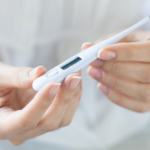I turned to the last page of Mrs. Morse’s records, Exhibit F, the Disease Compensation Schedule. This is, ultimately, the bottom line. How much money is she owed from Dow Corning? I have to merely check a box, and the settlement award for a 35-year-old woman with silicone breast implants and severe SLE is—$1.9 million.
My finger lingered over the number, $1.9 million. How did we get here? And why are so many women so sick after silicone breast implant surgery?
History of Breast Implants
Plastic surgeons Thomas Cronin and Frank Gerow are generally credited with performing the first silicone breast augmentation in 1962 on Texas housewife Timmie Jean Lindsey.
By wrapping the silicone-filled product in an impermeable silicone envelope developed by Dow Corning, the surgeons hoped to achieve the look and feel of breast tissue without the risk of inflammatory reactions previous surgeons had experienced with direct silicone injections into the breast. The procedure was a success (Ms. Lindsey is also reported to have had her prominent ears pinned back as part of the bargain), and thus began the modern era of breast augmentation and post-mastectomy reconstruction.
For several decades, women quietly underwent the procedure with little fanfare. The implants could shift or leak, breasts could pucker or contract, infection could occur post-operatively, but these poor outcomes were uncommon enough that the procedure remained popular. Dow Corning, the manufacturer of most of the silicone breast implants in the U.S., quietly prospered.
Of course, no one actually knew how often complications occurred. Oversight of breast implants by the Food and Drug Administration (FDA) was minimal due to a grandfathering clause in regulations. It was not until the early 1980s, when Ralph Nader’s Public Citizen Health Research Group alleged that breast implants increased the risk of breast cancer, that the FDA began to give silicone breast implants a closer look. New rules were developed that required silicone breast manufacturers to conduct studies to prove their products were safe if they were to remain on the market.
But this potential link between silicone breast implants and breast cancer was not borne out by further research. Numerous studies addressed the issue, all with the same conclusion: Silicone breast implants do not raise the risk of breast cancer or other forms of malignancy. But if malignancy risk was not an issue, other concerns soon arose.
Litigation Ensues
The landscape for litigation dramatically changed when Maria Stern brought suit against Dow Corning in 1984, claiming that her autoimmune disease was triggered by her silicone breast implants. Ms. Stern’s case was successful, aided in part by the discovery of incriminating, secret Dow Corning documents.1 The jury awarded her $211,000 in compensatory damages and $1.5 million in punitive damages.
